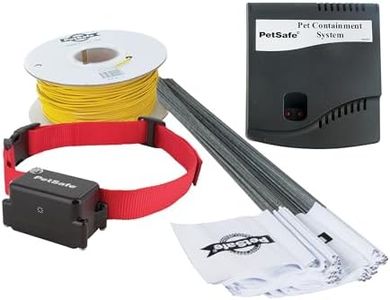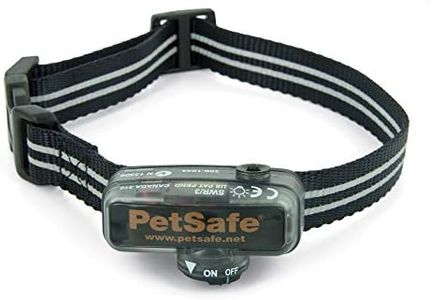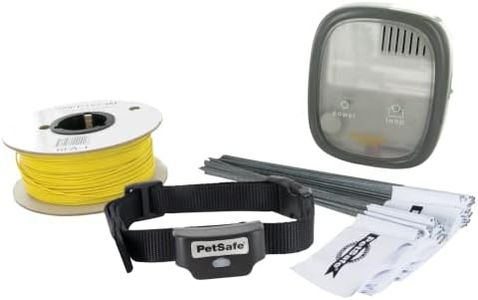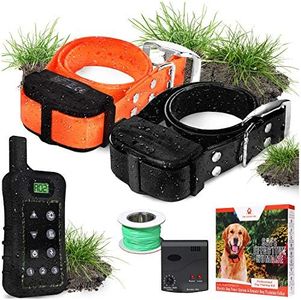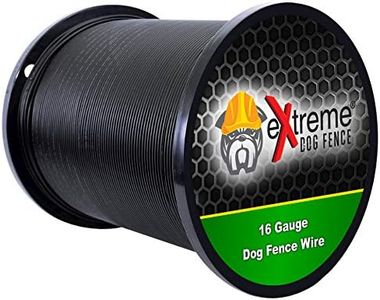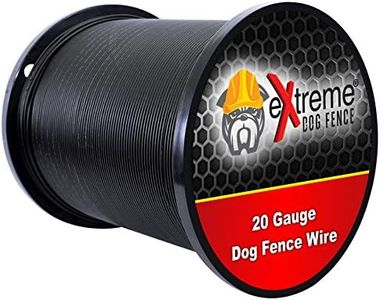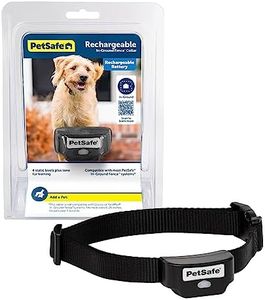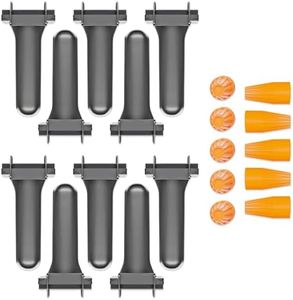We Use CookiesWe use cookies to enhance the security, performance,
functionality and for analytical and promotional activities. By continuing to browse this site you
are agreeing to our privacy policy
10 Best In Ground Electric Dog Fences
From leading brands and best sellers available on the web.Buying Guide for the Best In Ground Electric Dog Fences
Choosing an in-ground electric dog fence is an important decision if you want to safely contain your pet while still giving them space to roam. These systems work by using a buried wire to define the boundaries of your yard, paired with a collar that delivers a safe corrective signal when your dog approaches the boundary. When selecting the right system, focus on your yard size, your dog's temperament, and ease of installation and maintenance. Understanding the key features will ensure you choose a fence that fits both your property and your dog's needs.Boundary Range (Coverage Area)The boundary range, or coverage area, refers to how much ground the wire can cover and therefore how big your dog's play area can be. This is crucial because a system that's too small won't enclose your full yard, while an unnecessarily large system adds cost and complexity. Small coverage (up to 1/3 acre) is good for smaller yards or specific pet areas; medium (up to 1-5 acres) fits most standard properties, while large coverage (10 acres or more) suits bigger plots or farms. Always measure your yard and choose a system that matches or slightly exceeds your needs to ensure full coverage.
Wire GaugeWire gauge refers to the thickness and durability of the wire used to set the boundary. Thicker wire (with a lower gauge number, like 14 or 16 gauge) is more durable and less likely to break, especially if you have tough soil or plan to bury the wire deeply. Thinner wire (18 or 20 gauge) may be fine for milder climates and shallow burials but can break more easily. If your soil is rocky or if the wire is at risk for being disturbed, consider investing in a heavier gauge wire for fewer repairs and long-term reliability.
Correction Types and LevelsCorrection types are the ways the collar communicates boundaries to your dog, usually through static stimulation, sound, or vibration. More correction levels mean you can fine-tune how strong the response is, helping match it to your dog's size and temperament. Gentle, timid dogs may only need sound or a light vibration; strong-willed or larger breeds might need a higher setting. Multiple adjustable corrections ensure you can safely and effectively train most dogs without causing undue stress.
Collar Compatibility and ExpandabilityCollar compatibility tells you if the system works with multiple or certain types of collars, which is key if you have more than one dog or specific collar needs (like waterproof or rechargeable units). Expandability also matters—some systems let you add more wire for a bigger area or new collars for additional pets. If you're likely to get more dogs or want to adjust your fence in the future, pick a system that makes expansion easy.
Installation and SetupInstallation covers everything from how easy it is to lay the wire to how user-friendly the transmitter unit and training process are. Some systems come with detailed instructions and templates, while others may require more technical skill or professional installation. If you’re not comfortable with DIY projects or if your yard has difficult terrain, look for systems known for easier setup with clear guides or customer support. Good installation guides help ensure your fence works reliably and safely.
Battery Life and Power SourceBattery life refers to how long the collar and transmitter will work before you need to recharge or replace batteries. Longer battery life means less maintenance, especially important if your dog spends a lot of unsupervised time outdoors. Some systems use rechargeable collars, while others use replaceable batteries. If convenience is important, or if your dog is outdoors often, opt for a system with longer-lasting battery solutions or rechargeable options.
Waterproof and Weather ResistanceSince the wire is buried and the collar is worn outside, both must stand up to rain, mud, and general outdoor use. A fully waterproof collar is essential if your dog plays in water or wet grass, while a weatherproof transmitter box will avoid malfunctions due to rain or snow. Check for systems that specifically mention waterproof or weather-resistant properties so you can be confident the fence will work in all conditions.

